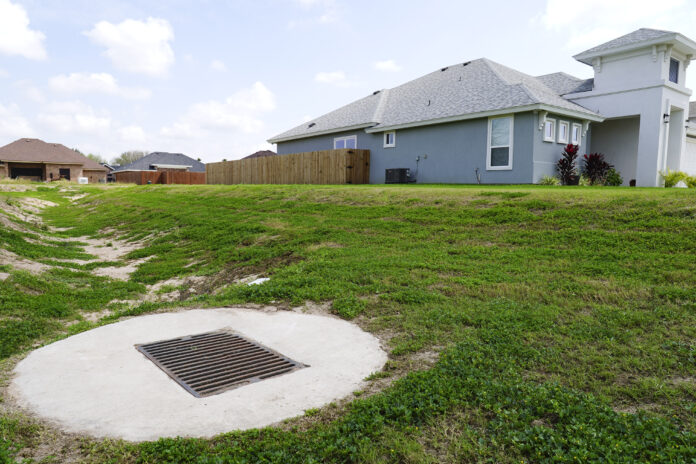
HARLINGEN — Revised subdivision drainage standards could cut developers’ costs they argue have been boosting lot prices here.
Now, developers might not be required to build costly detention ponds to hold runoff if city commissioners allow them to widen drainage ditches running along their new subdivisions.
Earlier this week, commissioners agreed to revise parts of the newly toughened Subdivision Development Guide, a manual specifying engineering standards set to protect homes against bigger storms.
In a meeting, commissioners said they would consider developers’ requests to widen drainage ditches instead of building detention ponds — one of the development guide’s key measures aimed at holding floodwaters.
Based on the city engineer’s recommendations, commissioners will determine whether to allow developers to widen drainage ditches to help drain subdivisions’ runoff.
Commission to make final decisions
During the meeting, Xavier Cervantes, the city’s planning director, told commissioners they would determine whether to grant developers’ requests following the Planning and Zoning Committee’s recommendations.
“If the developer is proposing to widen the ditch … P&Z will make a recommendation,” he said during Wednesday’s meeting. “The city commission will make the final decision … if the subdivision engineer makes a good case for the widening, with the backing of the city engineer, of course.”
Commissioners will base their decisions on the city engineer’s recommendations, Mayor Norma Sepulveda said.
“(City Engineer Luis Vargas) will make the recommendation whether we should not should not,” she said.
Footing the bill
In cases in which commissioners grant developers’ requests to widen drainage ditches instead of building detention ponds in their new subdivisions, developers will fund the cost of widening ditches, City Manager Gabriel Gonzalez said.
“The developer would be responsible for the widening of that ditch, if it gets approved,” he told commissioners.
Meanwhile, the cost of maintaining widened drainage ditches would fall on their owners, Cervantes told Commissioner Frank Morales.
“If it’s a city ditch, it will be the city,” he said. “If it’s a drainage district ditch, it will be the drainage district.”
Curbs and gutters, concrete testing
In August, commissioners met with developers requesting they help streamline the development process, trim some requirements while revising detention pond standards.
During that meeting, developers requested officials allow them to use fiber mesh to reinforce their new subdivisions’ curbs and gutters rather than steel rebars, a process described as costly and labor-intensive.
Last month, commissioners took the Planning and Zoning Committee’s recommendation to allow developers to use fiber mesh to reinforce curbs and gutters.
Commissioners also took the planning board’s recommendation to allow officials to cut down on the number of tests developers are required to perform to assure adequate concrete compaction.
During his presentation, Cervantes told commissioners, “The testing requirements for drainage and streets were adjusted while not compromising in ensuring the city is accepting quality infrastructure,” adding, “it’s a good change for the city and for the developers.”
Meanwhile, the city’s hiring a second inspector to help speed up the development process.
Streamlining development
As a result of August’s meeting with developers, commissioners are taking other steps to streamline the development process.
“Some of the ideas presented include hiring more civil engineers to speed up the inspection process, allowing more than one person to sign the certificates of occupancy, eliminating the rebar requirement in sidewalks, creating a college program to train inspectors, adding more staff to answer phone calls and more leeway to determine if a detention pond is required in subdivisions,” officials stated in a press release.
“The city has already taken a major first step by purchasing online software to streamline the permitting process,” they stated. “The software will allow developers, engineers and contractors to track their permitting process from beginning to end. The software will progressively come online in the coming months benefiting all parties.”
Background
In 2020, the Planning and Zoning Committee drafted the city’s first version of the Subdivision Development Guide, toughening developers’ drainage requirements to better protect homes against bigger storms.
Then in March, the past city commission boosted those standards, requiring developers step up measures by building bigger detention ponds as part of their new subdivisions.
In an interview, developer Armando Elizarde said the requirement to build bigger detention ponds was helping drive some subdivision lot prices as high as $50,000.




